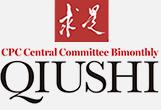The Yangtze River Culture—a Cultural Artery Running Through the Heart of the Chinese Nation
The Yangtze River culture has relied on the geographic space of the Yangtze River Basin to emerge and evolve as a system, capturing all the essential cultural qualities and distinctive features of this region in one cohesive whole. This rich cultural tapestry, with its many layers and dimensions, has, over its long history, developed into a vital cultural artery running through the heart of the Chinese nation.
The mutually supportive relationship between the Yangtze and Yellow rivers has been instrumental in sustaining the Chinese civilization and preserving its unbroken history. These two major waterways, though separated by natural barriers, run in parallel across China’s vast and intricate landscape, complementing each other in their roles. For millennia, they have served as the grand stages where the epic events of Chinese history have been played out.
China is unique as the only major civilization that has endured unbroken to the present day in the form of a unified state—an achievement that owes much to the relationship between the Yangtze and Yellow rivers and the two-way flows between north and south they facilitated.
The complementary dynamic between the Yangtze’s rice-based culture and the Yellow River’s wheat- and millet-based culture helped foster the tremendous vitality that has enabled the Chinese people to undergo constant self-renewal, respond to challenges, and explore new frontiers. This has been a major factor in Chinese civilization’s enduring vitality and continuity over the millennia.
Through their ocean links and tributary networks, China’s rivers have facilitated cultural exchanges and integration and fostered openness and inclusiveness. As a major national artery and thoroughfare, the Yangtze River flows through China’s heartland, connecting to the Yellow River in the north, the Lingnan region in the south, the Qinghai-Xizang Plateau in the west, and the ocean and the wider world in the east. It encompasses 8 major tributaries, over 700 secondary tributaries, and more than 3,600 minor waterways, along with countless smaller streams that vein the landscape in an intricate web.
Since ancient times, the Yangtze River Basin, with its rich resources and convenient transportation, has helped bridge the distinct internal differences of China’s vast regions and peoples to form a unified multi-ethnic nation. It has also facilitated stronger commercial and cultural exchanges between China and other civilizations. This is a reflection of our nation’s traditional preference for communication, exchange, and integration and our open cultural mindset of seeking to embrace and draw on other cultures from around the world.
Remaining at the forefront of change, the Yangtze River Basin has exemplified how Chinese civilization has continuously renewed itself by discarding what is outdated in favor of what is new. Over the course of China’s history, the region has long led the way in economic development. Thanks to its wealth of resources and spirit of openness and inclusiveness, it has been a driving force for cultural flourishing and intellectual innovation, nurturing many generations of outstanding thinkers and countless distinguished figures.
In modern times, the Yangtze River Basin absorbed Western knowledge and creatively blended it with local traditions to pioneer advances in industry, commerce, education, science, and literature.
During key historical events, such as the Westernization Movement, the Reform Movement of 1898, the Revolution of 1911, the initial dissemination of Marxist ideas, and the founding of the Communist Party of China, countless local patriots emerged in succession to devote themselves to the cause of national rejuvenation, each adding remarkable chapters to the Yangtze River Basin’s history.
This history reflects the region’s defining characteristic: its pioneering spirit. It also epitomizes the Chinese nation’s commitment to the continuous material, cultural-ethical, and political advancement based on the principle of “improving oneself each day, day in and day out, and forever building on improvement.” It exemplifies our enterprising spirit of honoring tradition without clinging to the past and respecting ancient wisdom without reverting to archaic thinking, as well as our fearless character in squarely facing new challenges and embracing new things.
Editor: Yi Xiaowei
























